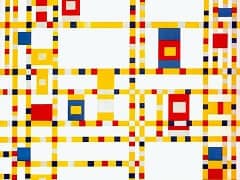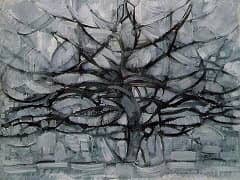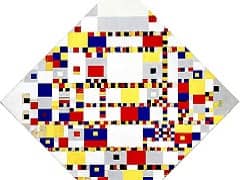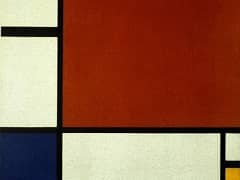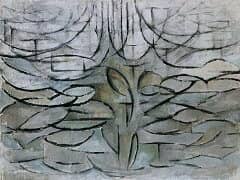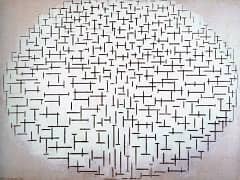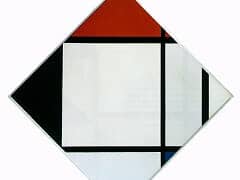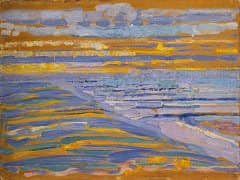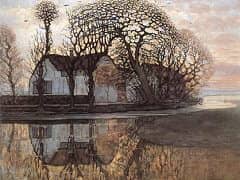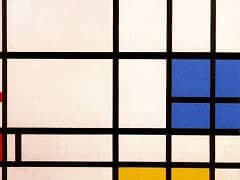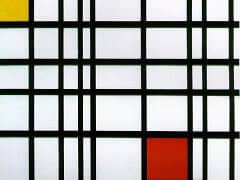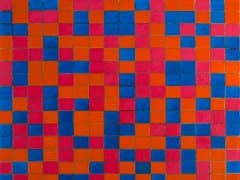Evening at Weesperzijde Sun by Piet Mondrian
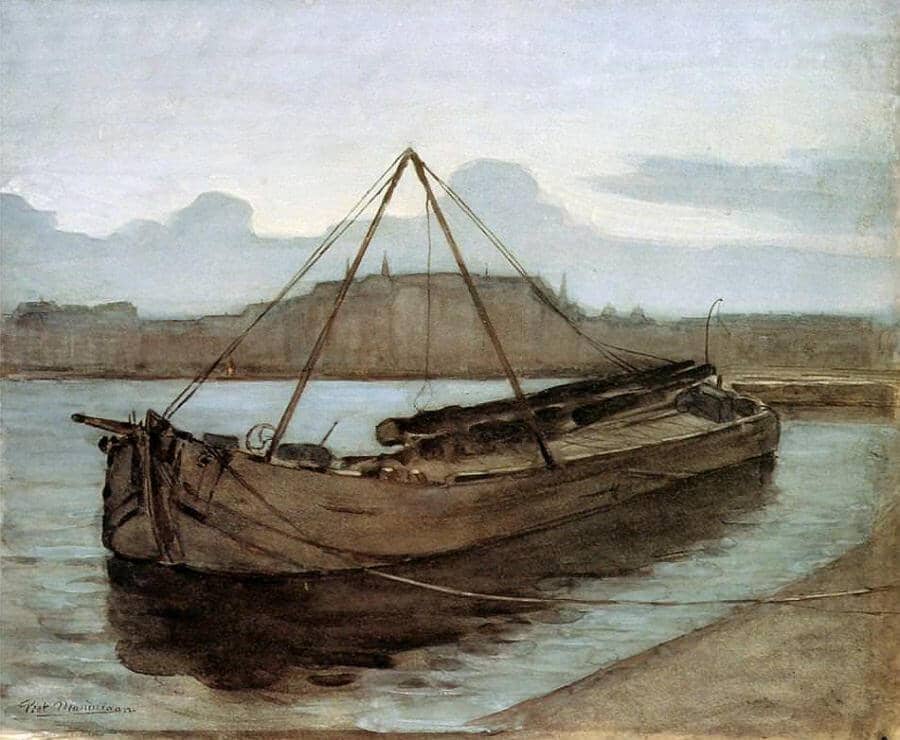
Mondrian's lifetime work has been an evolutionary process that has radically transformed the art of representing reality by means of painting.
From images that reproduce the outward appearance of the world, to which we are accustomed, to compositions of lines and planes of color, a space that no longer seems to have anything in common with our immediate perception of reality. At the beginning of his work as an artist, Mondrian painted in accordance with the tried and tested canons of naturalistic painting, otherwise known as realistic or figurative.
During the naturalistic phase, the young artist painted a variety of still lifes, a great many landscapes, human figures and single flowers.
Mondrian's non-figurative paintings - planes of primary color with black and white - convey what he described as a 'dynamic equilibrium', which he hoped would work on the individual spirit and have wider social implications.
In the wake of the so-called Dutch luministic painting, as well as the work of Vincent Van Gogh and the Fauves painters, like Henri Matisse, Mondrian began around 1907 to use colors corresponding more to his inner vision rather than the more immediate appearance of things.

